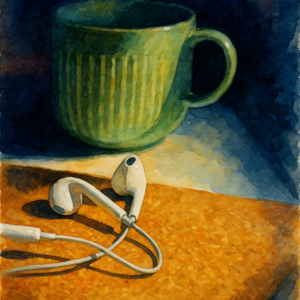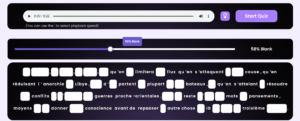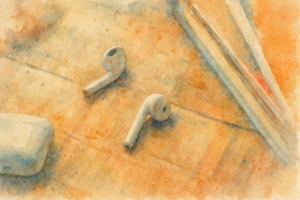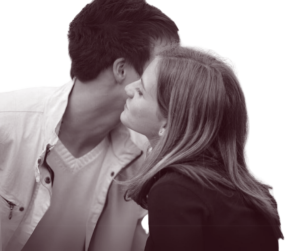I’m a millennial dad. So that means my wife and I follow Dr Becky on Instagram. I love her opinions on parenting. One interesting thing that she has shared is “the Learning Space”. This has helped me immensely as a parent and as a learner of French and many other things.
I know this isn’t Dr. Becky’s idea.
The concept of being able to grow and learn isn’t new to me, I’ve read books by Carol Dweck and watched her TED talk. Some of my previous work even focused on fostering a growth mindset in myself and in my clients. It’s the same idea, “I don’t know it… yet”.
A new way of thinking
What feels new to me, however, and what I have to thank Dr Becky for, is the naming of the “learning space”. I understand this space as that feeling that we might feel when challenged with something new.
When my daughter is practicing her reading her body squirms, she melts down low, she looks to me to say the word for her. Physically there is so much happening in her space. All that physical reaction is a response to the challenge her brain is facing. The mind is growing and learning as new synapses connect and we work that muscle.
Distinguishing it
I bring this idea up because it’s essential to distinguish this space as we learn a new language. We can spot it, recognize it and then celebrate. And this opens the door to building up habits and opportunities to learn faster.
Can you spot it?
I’m not a PhD in education, but that doesn’t matter. This is so easy to spot. It’s easy to spot it in other people and helps if we have a partner who can point it out for us.
Distinguishing it is so important. When someone else points to us doing certain things it can help. But even by ourselves, we can notice bodily sensations. For me, it’s feelings of tightness, or smallness, or some sweat. And noticing it allows me some control. I can distinguish the feelings and acknowledge that I’m doing some work. I’m in the space where my brain is trying to tell my body to run away.
I think it’s definitely easier to spot in others. (Our blindspots are blindspots for a reason!) I can spot it easily in my children and name it. Spotting it in myself is different. Things to look for or notice: Is there anger, frustration, or fear bubbling up in something new? Perhaps that’s just you brain being in the learning space.
How does your body react?
Notice the physical reactions your body makes. Maybe you don’t squirm and melt like my daughter, but other physical actions will take place. Do you just need to get a glass of water or a coffee? Is there something around the house that just NEEDS to be taken care of and can’t wait any longer?
Try on that all those thoughts, all these distractions, are actually a reaction to the learning space. Your brain is being stretched and pulled in ways that it doesn’t like. Our brains don’t like change, the brain wants routine and an expected future, not something new and learning. Anything that call you out of the moment where you’re learning is actually a reaction to the learning space. A reaction to pushing yourself outside of your comfort zone into the space where your brain is creating something new.
This is, of course, why I love short blocks for language learning (Read more about 15 minutes here). It’s just enough to start to challenge without overwhelming. A podcast episode can be up to an hour long, but focusing on just a short clip at a time keeps it accessible.
Why to celebrate
Pointing to the learning space as it happens is a great start. This means you’re distinguishing it as a unique place to be in. And understanding how our bodies react to being in it is a great start.
Take on, when you’re starting to do some heavy lifting in a foreign language, or a new project, or anything new for that matter, take on that your brain will automatically try to get you out of it. If you know that going in, you’ll have far more power to STAY in the learning space.
And staying in the learning space is when you should really celebrate. After all, it’s only IN the learning space that we can actually learn something new.
Where are you now? When was the last time you were in the learning space? When’s the next time you’ll be there?
Next steps for you, the learner.
If you can combine your practice in a new language with the idea of the “the learning space” you may just be able to stay in the work longer. When you sit down to write your journal in French or watch that TV show with you notebook and pencil, you won’t find yourself thinking about Instagram or another glass of water or snack, or the chores you could be doing. You’ll be able to stay present in the learning task you created. That’s real power over your mind and the possibility of really learning. Test it out with some of our strategies for immersing anywhere.








